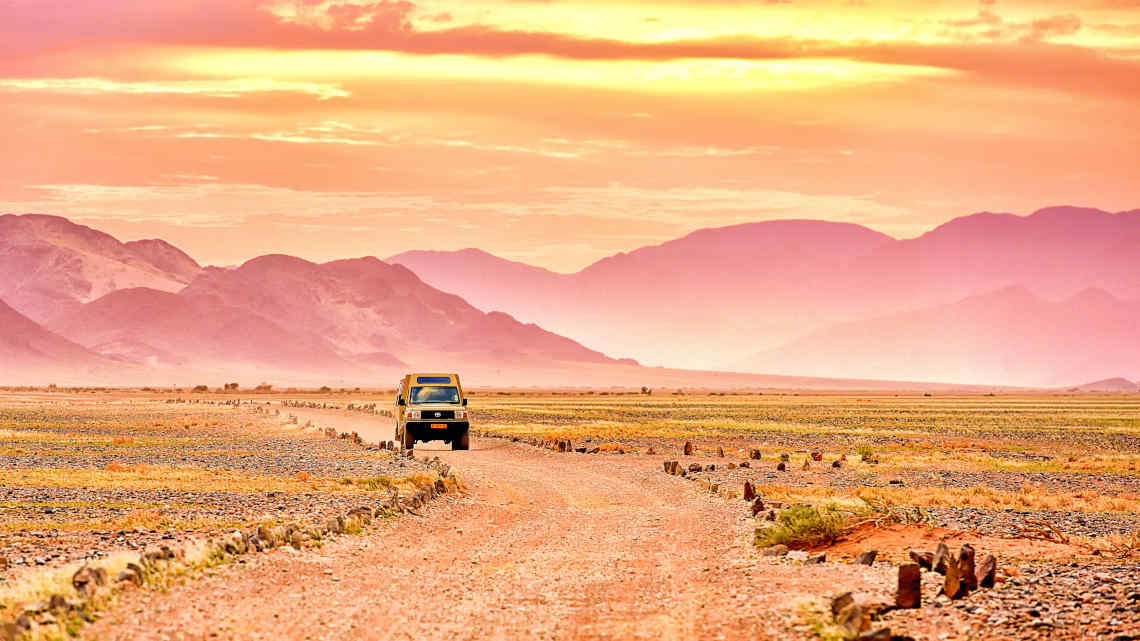Badania rynku w Namibii

The Republic of Namibia is on the southwestern coast of Africa. Angola borders Namibia to the north, Zambia to the northeast, Botswana to the east, South Africa is to the southeast and south, and the Atlantic Ocean to the west.
The official language is English, but only about 3 percent of the population uses it as their home language. The leading home language is Ovambo. People also talk to each other in Nama-Damara, Kavango, Caprivian, and Afrikaans. Many Namibians speak two or more indigenous languages. They also know at least two of the three European languages of English, Afrikaans, and German.
Many adhere to the Christian faith, at least in name. A small portion of the population adheres to traditional beliefs.
Kluczowe branże
The mining industry accounts for under a third of Namibia’s GDP. Yet, only a tiny part of the labor force works in the mines. Diamonds, uranium oxide, and base metals are primary mining resources. The production of uranium is high, but problems arise for new ore deposits. Thus, the industry needs expansion to new mines to maintain the production of uranium.
Exports include diamonds, uranium oxide, furs, meat, fish, other animal products, base metals, and gold. The main markets are South Africa, other neighboring countries, and western Europe.
Agriculture is one of Namibia’s most important sectors. But, it forms only a fraction of mining’s contribution to GDP. Still, the majority of the population depends on agriculture for its livelihood.
Livestock farming makes up about two-thirds of agricultural production and is an important foreign exchange earner for Namibia. Crop farming and forestry make up the remaining third.
Osiedla
Windhoek is Namibia’s capital, located almost in the country’s center. Before European settlement began, the town’s name was Aigams, meaning “hot water.” The name is a reference to the hot springs in the region.
About half of the entire population lives in the far north. Roughly 15 percent live in the commercial ranching areas north and south of Windhoek. Another ten percent lives in central and southern ex-black homelands. Quite a few live in Greater Windhoek. The rest live in coastal and inland mining towns. More than one-third of Namibians live in urban areas.
Trendy
Namibia’s population is young. It’s growing at a modest rate as opposed to other African countries.
The COVID–19 pandemic struck Namibia’s economy hard with a decline in tourism and retail. Trade and investments also suffered, as did health and education. A concern is also employment and wage inequality aggravated by the pandemic. Some experts proposed that Namibia focus on technology to help with economic growth.
Internet penetration in Namibia was at 51% in January 2021. Internet and social media use expanded after that.
Korzyści i mocne strony rynku
Namibia jest siódmym najbardziej przyjaznym biznesowi krajem w Afryce. Gospodarka, stabilność polityczna i dochód na mieszkańca plasują się wśród najlepszych w Afryce.
Namibia provides a little less than a third of the global diamond output and is a high producer of uranium oxide.
Namibia is also a leader in meat production. It was the first African country to export beef to the United States.
Baza konsumentów
The bulk of Namibians are black, with a few people having European ancestry.
The World Bank considers Namibia an upper-middle-income economy. This ranking is above average for countries in sub-Saharan Africa. This summary is misleading as most Namibians live in poverty, and many have limited access to public services. Malnutrition is an issue, particularly among children. Less than 50 percent of the labor force is engaged in formal wage employment. In fact, the country has very high unemployment statistics.
Most Namibians engage in subsistence agriculture and herding. Namibia also has hundreds of thousands of skilled workers.
Despite the poverty of its people, Namibia has one of Africa’s best healthcare systems (measured by population-to-hospital bed and population-to-doctor ratios).
More than half of Namibia’s population lives in urban centers, while the rest live in rural areas.
Compared to other countries south of the Sahara, it’s easy to reach out to Namibian consumers. The Namibian consumer is well-educated and has better social media connections.
Why You Should Grow Your Business in the Namibian Market
Namibia has the potential for investment in the development of many of its resources. Its industries, though established, are still developing and emerging.
The government channels a wealth of natural resources into mining. This practice can serve as an opportunity for companies. Namibians need investors to provide equipment and services to mining operators.
Namibia imports nearly all its consumer goods and exports most of its primary resources, many unprocessed. Investors have opportunities to introduce new consumer goods. As an investor, you can also expand manufacturing for both local and international markets.
The urban population in Namibia is growing fast and the country has a sizeable wealthy consumer base, which offers many opportunities for potential investors. Namibia has an affluent consumer segment, which is brand loyal. These consumers are willing to pay higher prices for faster and better service.
About Market Research in Namibia
It’s essential to look at the distribution of wealth. It’s also vital to know the demographics in particular areas. Thus, it may prove fruitful to have Focus Groups, Surveys, and Interviews. These tools can help to target isolated groups to determine the next course of action. Another critical service is Qualitative, Quantitative, and Strategy Research. Your business needs these services to be successful in Namibia. Contact SIS International today for more options for the Namibian market.


